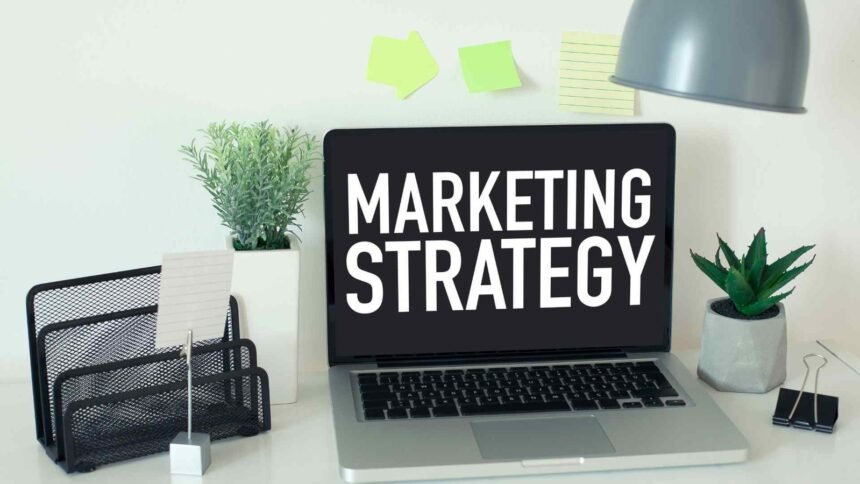In the fast-paced world of e-commerce, start-ups often face the challenge of limited marketing budgets. However, with the right strategies, it’s possible to achieve significant growth without breaking the bank. The top marketing strategies for e-commerce start-ups can be leveraged to maximize their impact while staying cost-effective. From building a strong online presence to nurturing customer relationships, these strategies are designed to help you grow your business efficiently.
Understanding Your Target Audience
Before diving into specific marketing tactics, it’s crucial to understand who your customers are. Knowing your audience’s demographics, preferences, and behaviors allows you to tailor your marketing efforts effectively.
- Market Research on a Budget: Utilize free tools like Google Analytics to analyze website traffic and customer behavior. Conduct simple surveys using platforms like Google Forms to gather direct feedback from your audience. This helps you identify what your customers want and how they interact with your brand.
- Creating Buyer Personas: Develop detailed profiles of your ideal customers based on the data you collect. These personas will guide your content creation, product offerings, and marketing messages, ensuring they resonate with your target market.
Building a Strong Online Presence
A strong online presence is essential for any e-commerce business. Here are some cost-effective ways to achieve it:
- Search Engine Optimization (SEO): Improve your website’s visibility on search engines by optimizing it with relevant keywords, creating high-quality content, and ensuring a user-friendly site structure. SEO is a long-term strategy that drives consistent, organic traffic without ongoing costs. Start with free tools like Google Keyword Planner for keyword research and focus on optimizing meta titles, descriptions, and loading times.
- Content Marketing: Regularly publish blog posts, videos, and other content that provides value to your audience. For example, write how-to guides, product comparison articles, or customer success stories. Use visuals like infographics or videos to enhance engagement. Content marketing improves SEO and positions your brand as an authority in your niche.
- Social Media Marketing: Engage with your audience on platforms where they are most active, such as Instagram, TikTok, or Facebook. Create shareable content, run contests, and interact with followers to build a community around your brand. Social media is a cost-effective way to increase brand awareness and drive traffic to your store.
Leveraging Customer Relationships
Your existing customers are a valuable asset. Here’s how to nurture these relationships:
- Email Marketing: Build an email list and send regular newsletters, promotional offers, and personalized recommendations. Tools like Mailchimp offer free plans for small businesses. Segment your email list based on customer behavior, purchase history, or demographics to send more relevant messages, which can improve open and click-through rates.
- Loyalty Programs: Reward repeat customers with discounts, free shipping, or exclusive access to new products. Loyalty programs encourage repeat business and turn satisfied customers into brand advocates through word-of-mouth referrals.
- User-Generated Content: Encourage customers to share their experiences with your products on social media. Feature this content on your website and social channels to build trust and authenticity. For example, display customer photos or reviews on your product pages to showcase real-world use.
Maximizing Sales with Smart Tactics
To boost sales, consider these tactical approaches:
- Retargeting: Use retargeting ads to re-engage visitors who showed interest but didn’t make a purchase. Platforms like Google Ads or Facebook Ads allow you to target these users with personalized ads, increasing the likelihood of conversion. Retargeting is cost-effective when done strategically.
- Affiliate Marketing: Partner with influencers, bloggers, or other businesses to promote your products. Pay them a commission for each sale they drive, which can be a low-risk way to expand your reach. Look for affiliates who already have an audience aligned with your target market.
- Influencer Marketing: Collaborate with micro-influencers who have engaged followers in your niche. Their endorsements can be powerful and often more affordable than working with larger influencers. Choose influencers whose audience aligns with your brand values and target market.
Optimizing Your E-commerce Store
Your website is the core of your e-commerce business. Ensuring it’s optimized can significantly impact your sales:
- Mobile Optimization: With the majority of online shopping happening on mobile devices, make sure your site is responsive and offers a seamless mobile experience. Test your site regularly to ensure fast loading times and easy navigation on smaller screens.
- Product Page Optimization: Each product page should have high-quality images, detailed descriptions, customer reviews, and clear calls to action. Use keywords in your product titles and descriptions to improve SEO. A/B test different layouts to see what drives the highest conversion rates.
- Chatbots and Live Chat: Implement chatbots to provide instant responses to customer queries. Chatbots can guide customers through the purchase process and answer common questions, improving customer service without the need for a large support team. Free or low-cost chatbot tools are widely available.
Emerging Trends to Watch
While the above strategies are immediately actionable, it’s also worth keeping an eye on emerging trends that could shape the future of e-commerce marketing:
- Voice Search Optimization: As voice-activated devices become more popular, optimize your product descriptions and content for voice search queries. Use conversational keywords and ensure your content answers common questions naturally.
- Augmented Reality (AR): Consider integrating AR features to allow customers to visualize products in their own space. While this may require some investment, it can enhance the shopping experience and set your brand apart.
- Social Commerce: Leverage platforms that allow direct selling through social media, reducing the need for customers to leave the platform to make a purchase. Platforms like Instagram and TikTok are increasingly integrating shopping features.
Performance Tracking and Analysis
To ensure your marketing efforts are effective, track performance using free tools like Google Analytics. Monitor key metrics such as website traffic, conversion rates, and customer acquisition costs. Adjust your strategies based on what’s working best to maximize your return on investment.
| Strategy | Cost Level | Key Benefit | Recommended Tool |
| SEO | Low | Drives organic traffic | Google Keyword Planner |
| Content Marketing | Low | Builds brand authority | Canva for visuals |
| Social Media Marketing | Low | Increases brand awareness | Hootsuite (free plan) |
| Email Marketing | Low | Nurtures customer relationships | Mailchimp |
| Retargeting | Moderate | Re-engages potential customers | Google Ads |
| Affiliate Marketing | Low-Moderate | Expands reach through partnerships | ShareASale |
| Influencer Marketing | Moderate | Leverages trusted voices | Upfluence |
Marketing on a budget requires creativity, consistency, and a focus on strategies that offer the best return on investment. By understanding your audience, building a strong online presence, leveraging customer relationships, using smart sales tactics, and optimizing your store, e-commerce start-ups can achieve growth without overspending. Experiment with these strategies, track their performance, and scale what works best for your business. As the e-commerce landscape evolves, staying informed about emerging trends like voice search and social commerce will keep your brand competitive.






